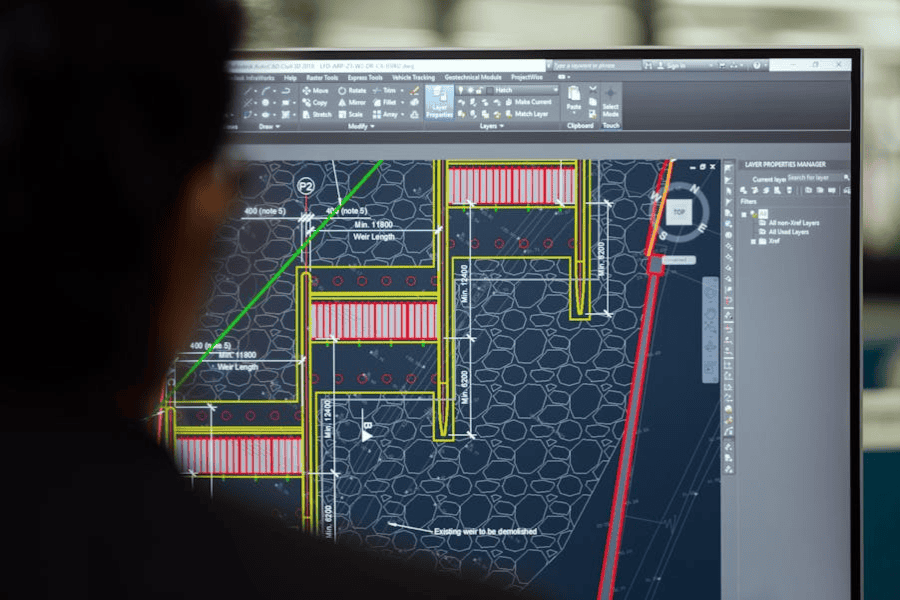What is Greenfield Project in Software Development: A Beginner’s Guide

A Greenfield project in software development represents a fresh start—a project initiated without existing code or legacy systems constraints. This clean slate approach allows developers to innovate freely, utilizing the latest technologies and methodologies to build a tailored solution from the ground up. But what exactly is a Greenfield project, and why might a company choose this path over modifying an existing system? In this introduction, we’ll explore the core concepts of Greenfield projects, their significance in today’s tech landscape, and the potential they offer for creating scalable, future-proof software solutions.
What is the Greenfield Project in Software Development?
A Greenfield project in software development refers to a new, from-scratch initiative that isn’t burdened by legacy systems or previous iterations. This type of project allows developers to innovate freely, creating tailored solutions to meet specific needs. It’s ideal for companies looking to build scalable and modern software, offering a clean slate but demanding thorough planning and foresight.
Why Choose a Greenfield Project in Software Development?
When developing new software, one of the first questions is whether to embark on a Greenfield project or modify existing systems. Choosing a Greenfield Project in Software Development is often motivated by the need for innovation and the desire to create a product unencumbered by previous limitations.
Greenfield projects are particularly advantageous when systems are outdated or require a new approach. By starting fresh, developers can incorporate the latest technologies, methodologies, and design principles without being held back by legacy constraints. This freedom is invaluable in creating a future-proof product aligned with modern standards.
Moreover, Greenfield projects allow for greater creativity and innovation. Developers are not bound by previous design choices or technical debt, which means they can explore and implement new ideas without compromise. This can lead to more efficient, scalable, and user-friendly software solutions.
However, choosing a Greenfield project should not be taken lightly. It requires careful consideration of the project’s scope, goals, and available resources. The initial freedom comes with the responsibility of building everything from the ground up, which can be resource-intensive and time-consuming. Therefore, it’s essential to weigh the benefits against the potential challenges and ensure that the team is prepared for the demands of starting from scratch.
Greenfield projects can significantly impact a company’s competitive edge. By creating a bespoke solution that perfectly fits the business needs, companies can differentiate themselves in the market, offering unique features and capabilities that are difficult to replicate.
When is a Greenfield Project the Right Choice?
Assessing the Existing Systems
Before deciding on a Greenfield project, it is crucial to evaluate the current systems. Are they outdated, overly complex, or inflexible? A Greenfield project may be the best option if existing systems cannot be easily modified or upgraded to meet new business needs.
Evaluating Project Scope and Goals
Consider the scope and objectives of your project. If your goals involve significant innovation or a new direction, a Greenfield approach can provide the flexibility needed to achieve them. This is particularly true for projects that leverage cutting-edge technology or require a novel user experience.
Resource Availability
Starting from scratch demands substantial resources, including time, budget, and talent. Ensure that your organization has the necessary resources to support a Greenfield project. The success of such a project heavily depends on the availability and expertise of the development team.
Competitive Pressure
Staying ahead of the curve is vital in highly competitive industries. A Greenfield project allows for rapid innovation, enabling companies to introduce new features and capabilities that give them a competitive advantage.
Long-term Strategy
Finally, consider your business’s long-term strategy. If your company is looking to position itself as a leader in innovation or is planning significant growth, a Greenfield project may better align with these long-term goals.
How to Successfully Implement a Greenfield Project in Software Development?
Successfully implementing a Greenfield project requires careful planning and execution. Below are key strategies to ensure your Greenfield project is a success:
- Define Clear Objectives: Start by clearly defining what you aim to achieve with the Greenfield project. This includes setting measurable goals and identifying the key features and functionalities required.
- Assemble a Skilled Team: Your team is crucial to the project’s success. Ensure you have a group of skilled developers, designers, and project managers who can work together effectively.
- Choose the Right Technologies: Since starting from scratch, you can select the latest and most suitable technologies. Make sure these align with the project’s goals and long-term vision.
- Plan for Scalability: A Greenfield project should be designed with scalability. This means building a foundation that can accommodate future growth and additional features without significant rework.
- Implement Agile Methodologies: Agile development practices are particularly well-suited to Greenfield projects. They allow for flexibility, iterative progress, and continuous feedback, essential when building something new.
- Regularly Review and Adapt: Keep the project on track by regularly reviewing progress and being willing to adapt plans as necessary. This iterative approach helps manage risks and ensure the project stays aligned with its objectives.
Maximizing Success in Greenfield Projects in Software Development
Understanding the Importance of Clear Objectives: One of the most critical factors in the success of a Greenfield project is having clear, well-defined objectives. These are necessary for the project to stay on track, leading to wasted resources and unmet goals. Clear objectives ensure that everyone on the team understands what the project aims to achieve, which helps maintain focus and direction.
Selecting the Right Team: It is crucial to choose the right team for a Greenfield project. The team should have various skills, including technical expertise, project management experience, and a deep understanding of the business’s needs. A well-rounded team is better equipped to handle the challenges of starting a project from scratch.
Technology Choices: With a greenfield project, you can choose the best technologies for your needs. This can include programming languages, development frameworks, and tools best suited to achieving your project’s goals. However, considering the long-term implications and future scalability, these choices should be made carefully.
Agile Methodologies: Implementing Agile methodologies in a Greenfield project can be highly beneficial. Agile allows for flexibility and iterative development, which is particularly useful when there are no existing systems or frameworks to guide the project. This approach helps adapt to changes and incorporate feedback quickly.
Continuous Review and Adaptation: Continuous review and adaptation are key to keeping a Greenfield project on track. Regular check-ins, progress reviews, and the willingness to adjust plans as necessary are vital in managing risks and ensuring the project meets its objectives.
Final Word
Embarking on a Greenfield project in software development offers the opportunity to innovate and create a solution perfectly tailored to your needs. However, it requires careful planning, resource allocation, and strategic decision-making. By understanding The Greenfield Project in Software Development, recognizing when it’s the right choice, and following best practices for implementation, you can maximize the chances of success. Greenfield projects can provide a significant competitive edge but must be managed effectively to deliver the desired outcomes.
FAQ’s
1. What are the main benefits of a Greenfield project?
Greenfield projects allow for innovation, customization, and modern technologies, offering a clean slate to create tailored software solutions.
2. What challenges should I expect in a Greenfield project?
Challenges include high initial costs, risk of scope creep, time-consuming processes, uncertain ROI, and complex project management.
3. How do I decide if a Greenfield project is right for my company?
Evaluate your existing systems, project scope, goals, resources, competitive pressure, and long-term strategy to determine if a Greenfield project aligns with your needs.
